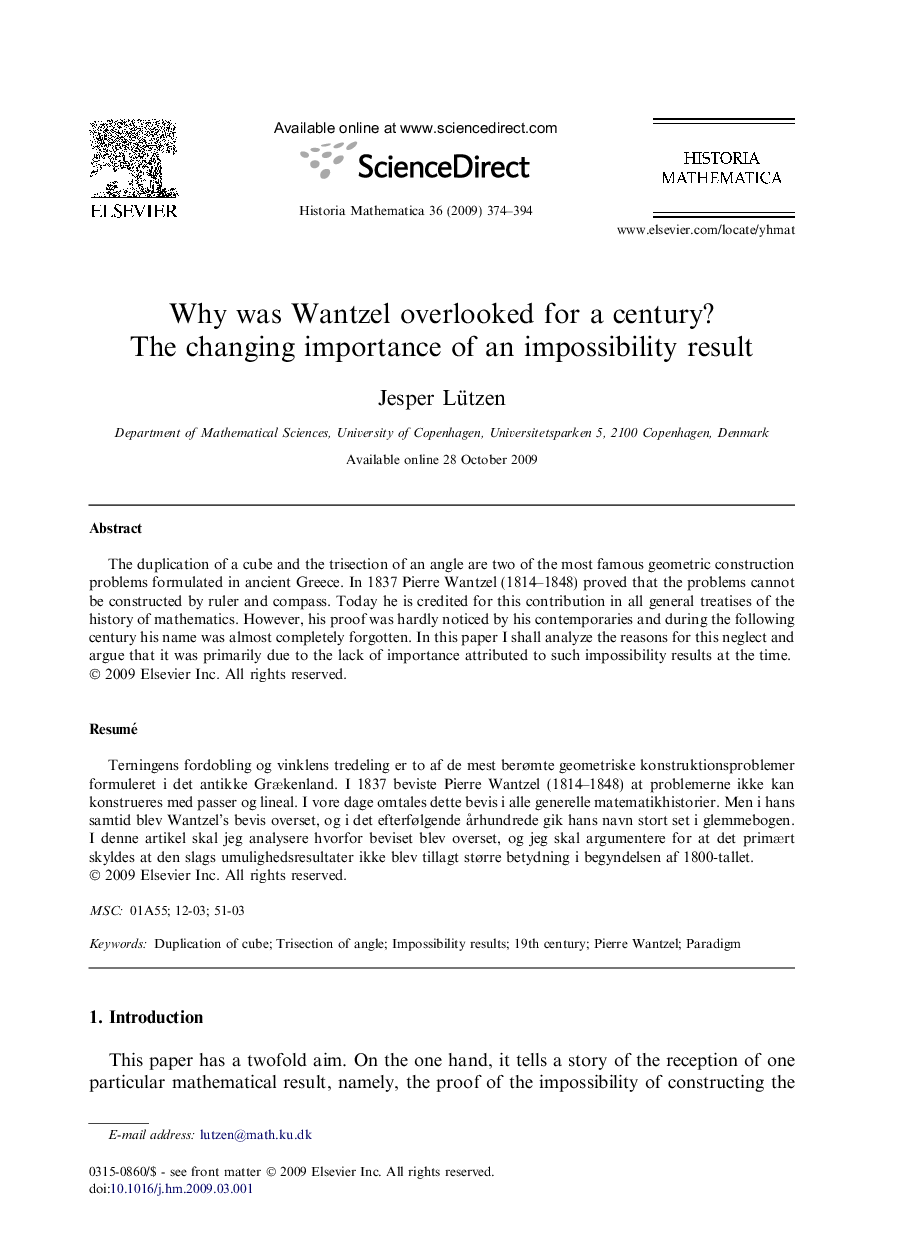| Article ID | Journal | Published Year | Pages | File Type |
|---|---|---|---|---|
| 1158651 | Historia Mathematica | 2009 | 21 Pages |
The duplication of a cube and the trisection of an angle are two of the most famous geometric construction problems formulated in ancient Greece. In 1837 Pierre Wantzel (1814–1848) proved that the problems cannot be constructed by ruler and compass. Today he is credited for this contribution in all general treatises of the history of mathematics. However, his proof was hardly noticed by his contemporaries and during the following century his name was almost completely forgotten. In this paper I shall analyze the reasons for this neglect and argue that it was primarily due to the lack of importance attributed to such impossibility results at the time.
ResuméTerningens fordobling og vinklens tredeling er to af de mest berømte geometriske konstruktionsproblemer formuleret i det antikke Grækenland. I 1837 beviste Pierre Wantzel (1814–1848) at problemerne ikke kan konstrueres med passer og lineal. I vore dage omtales dette bevis i alle generelle matematikhistorier. Men i hans samtid blev Wantzel’s bevis overset, og i det efterfølgende århundrede gik hans navn stort set i glemmebogen. I denne artikel skal jeg analysere hvorfor beviset blev overset, og jeg skal argumentere for at det primært skyldes at den slags umulighedsresultater ikke blev tillagt større betydning i begyndelsen af 1800-tallet.
